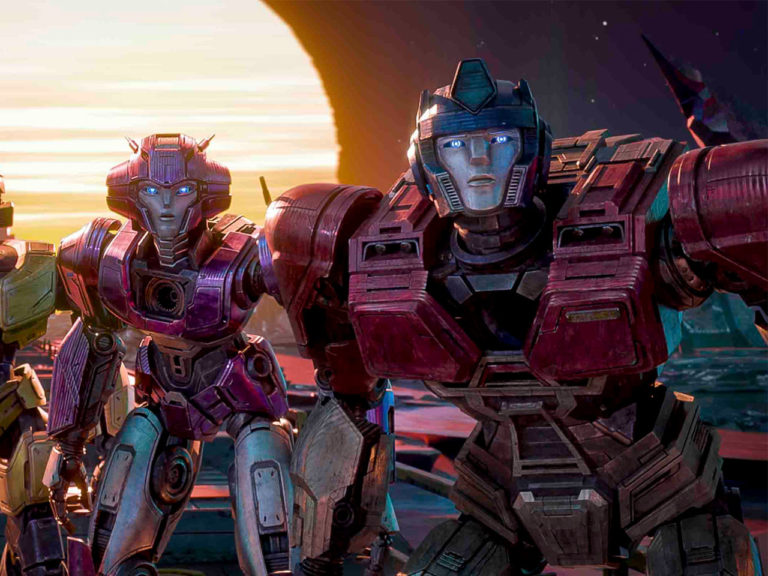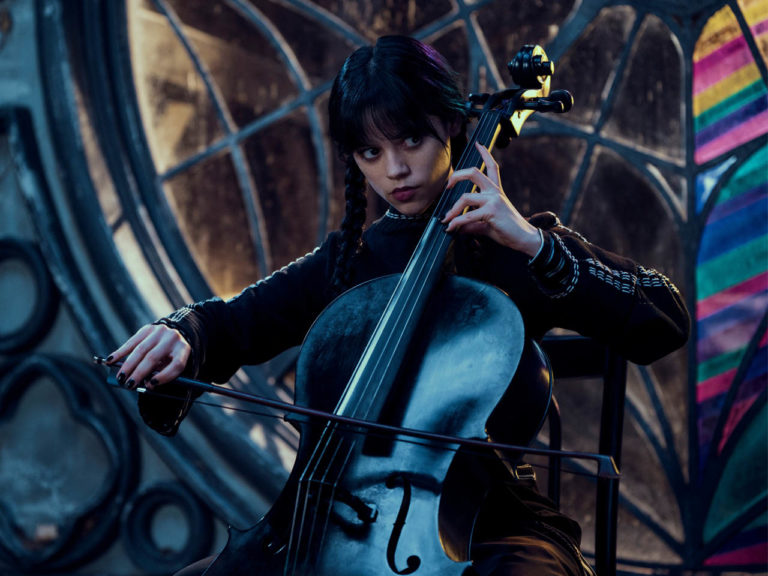
Before I start the review proper, you should know that you’ll get the most out of this comic if you’ve been following the Batman Who Laughs miniseries by Scott Snyder and Jock. While this issue is mainly devoted to fleshing out the Grim Knight’s character, it definitely reads like a chapter from the miniseries, and could easily be regarded as issue #3.5. We pick up where we left off with issue #3, and we find out why Grim Knight has captured Gordon. So, if you’ve been following the miniseries, you’ll definitely want to pick this up to get the full story. Now, without further ado, let’s have a look.

Usually I talk about the story, themes, script, etc, first in my reviews, but this time I want to start off by taking a moment to appreciate the incredible artwork by Eduardo Risso (artist) and Dave Stewart (colors). Every time I open up this book, I’m blown away by the level of craftsmanship that goes into the artwork. Seriously, I’m so in love with the art that I almost can’t stop thinking about how great it is.
Risso draws consistent character models: the proportions are always right, the facial expressions fit the tone that Snyder and Tynion want to convey and the same is true for the body language. For example, Grim Knight is always depicted as this big and mighty warrior, whose posture is intimidating and whose movements are both agile and overpowering. The character can become one with the shadows but he can also leap out into the light and fight like a fierce MMA champion. Especially his facial expressions add to how intimidating this guy is: he’s always angry, always grim, and at all times it’s hard to guess what his next move will be. The character’s overall looks remind me of how Frank Miller drew Batman in The Dark Knight Returns. If you look at Grim Knight from one angle you might mistake him for the Batman we all know and love, the Caped Crusader that watches over all of Gotham. But when you look again, you’ll see a fearsome, unstoppable killer.

The artwork is also full of energy and very dynamic. On every page there is movement. Sometimes it’s subtle, from a handful of papers fluttering about in the air to smoke rising from the barrel of a gun. Other times it’s focused on combat, where characters are trading blows, or Grim Bruce going through his training regiment, which echoes his training scenes from Batman: Year One. What’s more, the art is sequential, and that’s something that I always appreciate in a comic, because this is the driving mechanism of comics. Every panel sets up the next panel, and every now and then they build up to an awe-inspiring splash page that hits you out of nowhere.

Furthermore, the art captures the raw emotions of the characters in key moments, too. For example, on page five the artists present a nine panel grid. This is Grim Knight’s origin, which, of course, is set in Crime Alley. In the first panel we see a close-up on Joe Chill’s face, who looks rather unsure, but we don’t yet see what he’s looking at. In the second panel Young Bruce has picked up Chill’s gun (which the mugger had dropped) and we can see in Young Bruce’s wide eyes the realization that this is the weapon that ended his parents’ lives. This is the defining moment for Grim Knight: he is holding a tool of death in his hands and now he has to decide whether he should use it to kill Joe Chill or not. In the third panel, Joe Chill’s face screams panic and we see him reaching out his hand, as if he could ward off the bullet that way. Then, in panel four, Bruce has lifted the weapon, tears are streaming down his cheeks, and his finger is on the trigger. Panel five is a close-up on Bruce’s tense face; he’s crying and his eyes gaze straight into your soul. The expression on his face and the look in his eyes reveals that he’s crossed the line: this kid is going to avenge his parents then and there, in Crime Alley. Panel six is another close-up, but it’s centered on Joe Chill’s right eye, and it’s all fear and despair, as the man realizes what’s about to happen. The remaining three panels hammer home the severity of the situation, but you’ll have to buy the comic and see for yourself.
Dave Stewart is delivering outstanding work on top of Risso’s solid illustrations. Stewart uses two different styles in this book to distinguish the present day scenes from the flashbacks. If you’re familiar with his other work (Hellboy would be the main example), you know what to expect from the present day scenes. He uses a variety of colors, layered on top of each other, to make the Gotham sewers look appropriately filthy: this is not a place where you’d want to be. Stewart uses heavy blacks for shadows, which make the place look claustrophobic and somewhat mysterious because it’s nearly impossible to see what lies ahead. Overall, the colors in the present day scenes look crisp, which helps to really ground these scenes in the present moment as opposed to the beautiful watercolors he uses for the flashbacks. The watercolors are somewhat muddy, like we have to peer through a veil in order to see the past. Both styles complement each other well, and honestly, coupled with Risso’s work this book is just a feast for the eyes. The artwork alone is well worth the price of admission. Even if you haven’t been keeping up with the core miniseries, you may want to consider picking this up regardless. It’s just that great!

That said, the writing is pretty solid too. I guess I’ll address the elephant in the room first. I’ve noticed in the community that Tynion is often associated with large amounts of exposition, which puts some readers off. Well, worry not. While there is exposition in this comic, it’s concise and to-the-point to set up scenes and give us the context we require to understand those scenes. It’s used effectively, in that sense: as a tool to shape the story rather than it being the main mechanic that drives the story.
Additionally, the comic is paced really well: we get a full origin story, which very much feels like a darker reflection of Year One, in under twenty pages. The present day framing sequence—which shows what happens to Gordon as he’s being dragged through the sewers by Grim Knight—and the flashbacks alternate at the right moments. Snyder and Tynion take a clever approach here as we see Gordon questioning Grim Knight’s motives and actions, and it’s the various points in their discussion that set up certain flashback scenes. In doing so, the relationship between “our” Gordon and Batman and that of Grim Knight and his Gordon are paralleled, which helps to elevate this story above just being a straight-forward superhero comic: there’s a deeper character study in here, too, for those who are eager to connect the various scenes and form their own interpretations. It’s precisely this literary quality that makes me want to read on, and which makes this more than just another origin.
However, there are a few elements that I’m questioning. The first has to do with the fact that Grim Knight is essentially exactly the same as “our” Bruce, except he’s more crazy and he deliberately met up with assassins during his travels around the world to become the most effective killer himself. We also see him shooting the bat that crashes through his window before assuming the identity of Batman. What I dislike about all of this is that at the very core, this character is just a more extreme version of Batman with guns. Because of this, most of the things that I read in this comic seem so obvious to me that I could’ve thought of them myself, and so it doesn’t feel like I’m learning deep new insights with regards to the specific points I raised in this paragraph. But, at the same time, I can’t really hold this against the book. This is just who the character is, so holding the character’s own identity against him would be rather unfair. Still, I wish that the writers had found a slightly more unique angle rather than this straight-forward approach.
Another moment that I find questionable is that Gordon—not “our” Gordon, but the one from Grim Knight’s universe—is able to beat Bruce into the ground. Granted, Bruce here is severely outnumbered, all odds are stacked against him, and, really, all he can do is admit defeat. But we do see Bruce drawing a gun on Gordon, so the intent to fight back is definitely there, as far as I’m concerned. Does Bruce let Gordon beat him in this scenario? Is this perhaps because Bruce doesn’t want to go down without a fight, even if he can’t win that fight? The reason I dislike this scene is because it’s not entirely clear to me why Bruce is letting this happen. But both this point and the point above are minor. This is still a great read!

Before I wrap things up, there are three elements of Grim Knight’s back story that I really appreciate. First, Gordon (from Grim Knight’s universe) is as incorruptible and honest as ever. It’s awesome to see that, even though Grim Knight’s world is significantly darker than “our” Batman’s world, that darkness still isn’t enough to turn Gordon into a crook. In fact, I’d go as far as to say that Gordon is the coolest character in this entire book! Second, Alfred, too, is still very close to the Alfred we all know so well. While he expresses his love for Grim Bruce, he also lets him know how much he disapproves of his actions by actually walking out on him. Third, even though Grim Knight is a killer and a maniac, he still believes that he’s doing what he does to save Gotham City, which, from his own perspective, makes him the hero and not the villain. This makes his story more complex, which is pretty damn clever.
Recommended if…
- You have been reading the Batman Who Laughs miniseries—you really can’t miss this chapter if you have!
- Absolutely stellar artwork is always welcome in your collection!
- You are a fan of Jim Gordon!
Overall: This is a must buy for the art alone! Risso and Stewart carry the book, and are fantastic storytellers. Snyder and Tynion provide a solid script; it’s not riddled with exposition, but the exposition is used effectively: it’s to the point and clear. Perhaps the most interesting element of the book is the way in which it examines the relationship between Grim Knight and Gordon, and it reveals why Grim Knight decided to take Gordon with him in the first place. It’s this final reveal that turns the story upside-down and makes you look at Grim Knight differently. Seriously, fellow comic fans—you don’t want to miss this!
Score: 9.5/10
Disclaimer: DC Comics provided Batman News with an advance copy of this comic for the purpose of this review.


